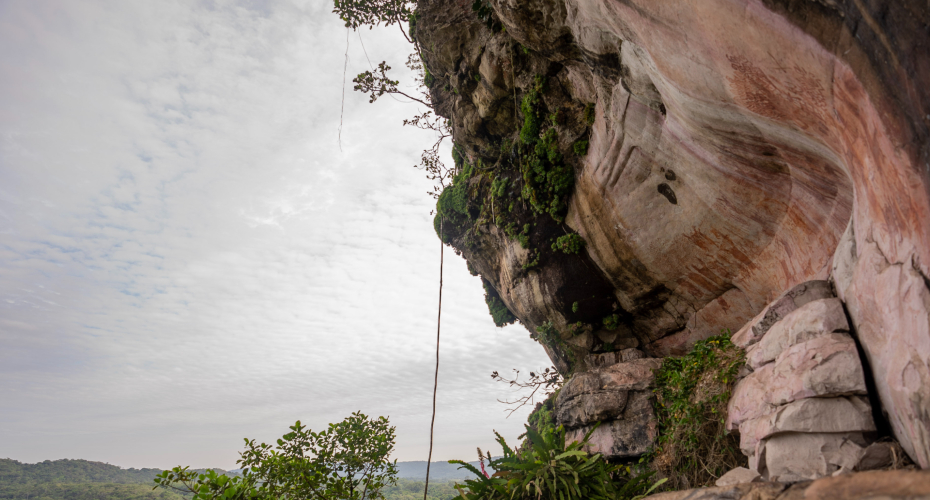Some of the earliest people to migrate to South America during the late Pleistocene era turned shallow caves in the Amazon into homes and safe havens from which they foraged for food, and galleries on which they painted vibrant artworks.
Analysis of rock shelters in northwest Colombia has provided insight into the activities of the first humans to arrive in the Amazon Basin, around 13,000 years ago, as part of a mass migration of people across the Americas.
They fashioned stone tools, managed plant resources, hunted and ate a variety of Amazonian animals, and prepared ochre for painting on the walls – much of which survives to this day as cave art.
The research, part of the €2.5m European Research Council funded LASTJOURNEY project, has been hailed as improving our understanding of when the colonisation of the Amazon interior took place and the types of activities that occurred within these settings that were likely both domestic and highly ritual.
The findings have been published by archaeologists at the University of Exeter; the University of Antioquia, Medellin; and the University National of Colombia, Bogota; and are featured in the latest edition of Quaternary Science Reviews.
“The ‘peopling’ of South America represents one of the great migrations of human history – but their arrival into the Amazon biome has been little understood,” says Mark Robinson, Associate Professor of Archaeology at the University of Exeter. “For researchers working in the field, dense rainforest makes it challenging to identify potential fieldwork sites, and acidic, clay-based soils impair the preservation of organic remains. Our recent excavations, however, help to fill this gap, not only dating their arrival to much earlier than previously understood, but also providing novel insights into their lives and historical trajectories during the Holocene.”
The research was conducted at two rock shelters four kilometres apart in the Serranía La Lindosa region, at the fringe of the Amazon and Orinoco basins in the Colombian Amazon. The team excavated sediments from both inside and immediately outside of the shelter and subjected it to geochemical analysis.
By analysing the stratigraphy of the soil, the researchers identified those layers that were formed by natural processes and those by human activity over time. The presence of stone fragments, charcoal, and high levels of organic matter indicative of food preparation, consumption and disposal, corresponded with the occupation of the shelter. The results also revealed periods where the site had been abandoned, often for more than a millennium at a time.
“The results firmly establish that the human occupation of Serranía La Lindosa began in the late Pleistocene, about 12,600 years ago, and continued until the 17th century,” says José Iriarte, Professor of Archaeology at Exeter. “The exceptional number of rock shelters found in the region with evidence of human habitation suggest that this area was an attractive landscape for forager groups, where they could access palm-dominated tropical forest, savannah, and riverine resources. The early foragers appear to have privileged the occupation of rock shelters that provided protection and visibility.”
The presence of ceramics in the soil dating to around 3,000 years ago; evidence of soil cultivation (2,500 years ago) and traces of maize (500 years ago) were all identified. Further studies are now underway on some of the recovered material, including animal bones, plant remains and ochre.
“Activity patterns, artefact discard, and soil chemistry indicate that both rock shelters were used as domestic spaces through time, as well as sacred locations for the display of highly evocative art,” adds Dr Jo Osborn, Postdoctoral Research Associate. “And it points to the existence of a broad-spectrum economy, with unifacial lithic tool technology. All of the rock shelters exhibit ochre paintings from the earliest occupations, indicating that those pioneers were also recording and making sense of this new world they encountered.”
The peopling of Amazonia: Chrono-stratigraphic evidence from Serranía La Lindosa, Colombian Amazon can be accessed via Quaternary Science Reviews.

